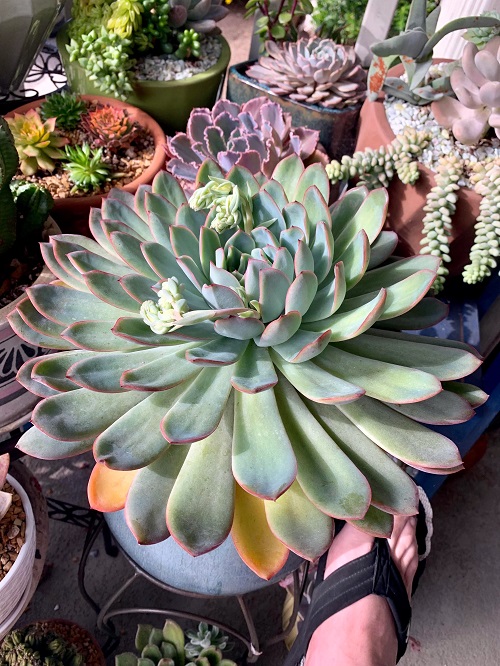Echeveria Pulidonis is a small little specimen that you can grow anywhere in the home or garden. It can also be a great coffee table plant!
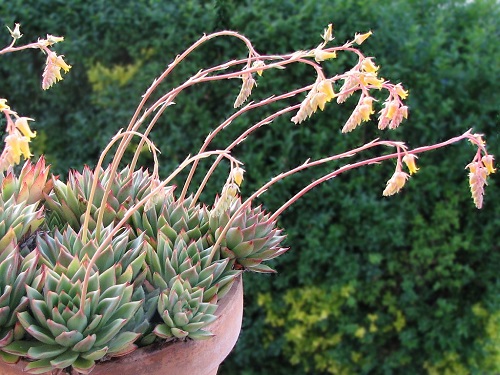
Echeveria Pulidonis is quite a popular succulent, thanks to its ease of maintenence nature and beautiful flowers that grow on tall spikes. Let’s have a look at how to grow it!
Learn How to Grow and Care for Echeveria elegans here
Echeveria Pulidonis Plant Information
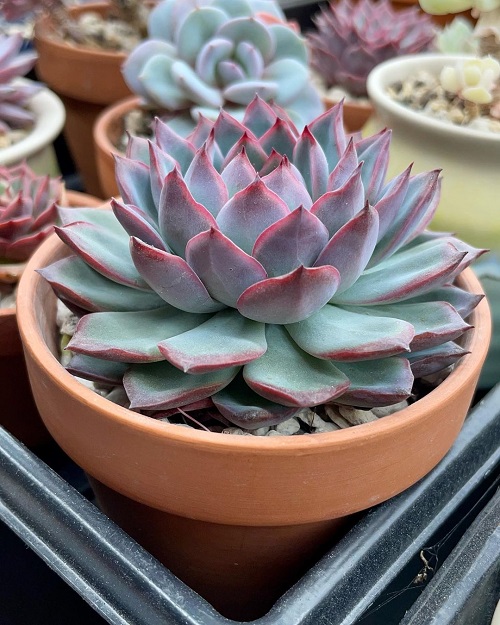
Pulido’s Echeveria, or Echeveria pulidonis, is a flowering succulent plant belonging to the Crassulaceae family and Echeveria genus.
Native to Mexico and Central America, this slow-growing succulent plant is stemless and forms rosettes of blue-green leaves with bright red edges. Its rosettes can grow up to 5 inches with flat and round leaves and a distinct red tip.
In the spring season, this plant produces bright yellow flowers on unbranched, red stems.
Check out the types of Echeverias here
How To Propagate Echeveria Pulidonis?
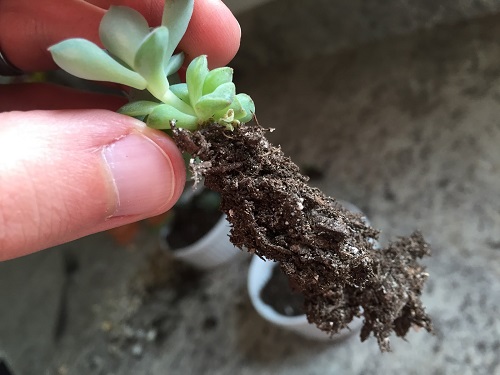
Propagating Echeveria Pulidonis is a straightforward process, with the most common methods being leaf and stem cuttings.
Leaf Cuttings:
- Gently pull a healthy leaf from the Echeveria Pulidonis plant.
- Allow the leaf to callous over for a few days.
- Place the leaf on top of slightly moist soil in a pot.
- Once roots have developed, the new plant can be transferred to a pot.
Here are Echeveria Varieties that Grow Bigger and Fuller
Stem Cuttings:
- Take a one-inch cutting from the stem of an Echeveria Pulidonis plant.
- Allow the cut to dry and callous over for a few days.
- Plant the stem cutting in a pot and water only when the soil is completely dry.
- Covering the stem cutting with soil can help it develop roots faster.
- Once roots have formed, the new Echeveria Pulidonis can be transplanted into a pot.
Have a look at the most stunning white succulents here!
Requirements for Growing Echeveria Pulidonis
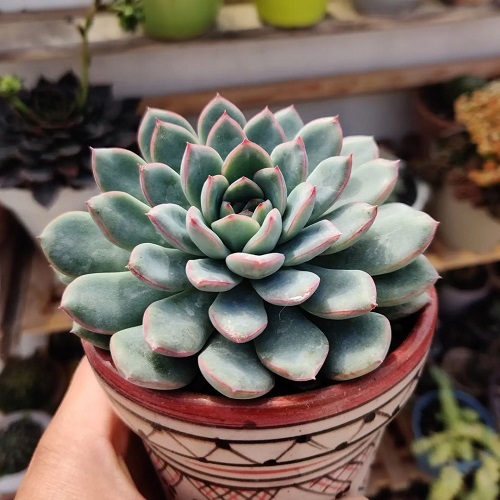
Sunlight
Echeveria Pulidonis requires an ample amount of sunlight. It prefers bright, direct sunlight but can tolerate some partial shade.
To maintain their vibrant color and shape, it’s crucial to expose these succulents to bright light during the day. On hot summer days with temperatures above 75 F, (24C) they can be kept in partial shade.
If you’re growing Echeveria pulidonis indoors, place the plant close to a window that gets plenty of sunlight. If natural light isn’t sufficient, you can use artificial light to provide the plant with the intensity it needs.
Soil
To provide the ideal soil for Echeveria pulidonis plants, use a well-draining potting mix that contains organic material.
A cactus mix with sphagnum peat moss or perlite mixed in can also work well. Ensure good drainage by placing the pot on a surface with drainage options, and you can add a layer of gravel underneath to keep moisture away from the roots.
Learn some Great Tips to Rejuvenate Your Old Soil here
Water
To avoid root rot, Echeveria pulidonis succulent plants should be watered sparingly, about once a week or less. The soil should be allowed to dry about an inch below the surface before watering again.
Overwatering can cause damage to the plant’s roots. Therefore, it is essential to ensure that the soil drains well and is not constantly wet.
To determine if the plant needs water, gently press down the soil with your finger about an inch below the surface. If the soil feels dry, it’s time to water. It’s crucial not to let the plant sit in standing water for extended periods, and the pot should have proper drainage to prevent root rot.
Here are the best ways to water plants
Temperature and Humidity
Echeveria pulidonis thrives in a warm climate with a constant average temperature of 65-75°F (18 to 24°C).
They can tolerate temperatures ranging from 50-60°F/ 13 to 16ºC in cooler areas to 80-90°F/ 27 to 32ºC in warmer areas. The temperature can fluctuate within this range without harming the plant.
The ideal humidity level for Echeveria pulidonis is around 40-60%. Therefore, it is important to avoid areas with excessive moisture or dry air.
If you live in a dry area, water your plant once a week or as needed and place it on top of pebbles or rocks to help disperse the moisture from underneath the pot.
Here are Ways To Increase Humidity For Houseplants That Work
Echeveria Pulidonis Care
Fertilizer
Echeveria pulidonis plants do not require excessive amounts of fertilizer.
- To provide the necessary nutrients, apply slow-release fertilizer once every two to three months throughout the year or more frequently in warmer climates.
- Alternatively, you can use a balanced liquid fertilizer, diluted to 1/4 of its strength, once in 3-5 weeks.
- The optimal time to fertilize your succulent is during its growing season, which is in the spring and summer months. This allows sufficient time for the plant to absorb the nutrients before the winter season arrives.
Want to Make Organic Fertilizers from Kitchen Scraps? Click here
Pests and Diseases
Echeveria pulidonis is a resilient and low-maintenance succulent plant. However, if it is not cared for properly, it can fall prey to pests and diseases, including mealybugs, spider mites, scale insects, and rot.
To address pest infestations, use horticultural oils or insecticidal soaps to deter their return. You can also scrub the leaves with a diluted solution of dish soap and water. To keep most of the diseases at bay, avoid overwatering and ensure the plant gets plenty of dappled light throughout the day.
If you suspect any of these issues, take immediate action to prevent them from worsening. It’s better to be proactive and prevent problems rather than attempting to fix them after the damage is done.

